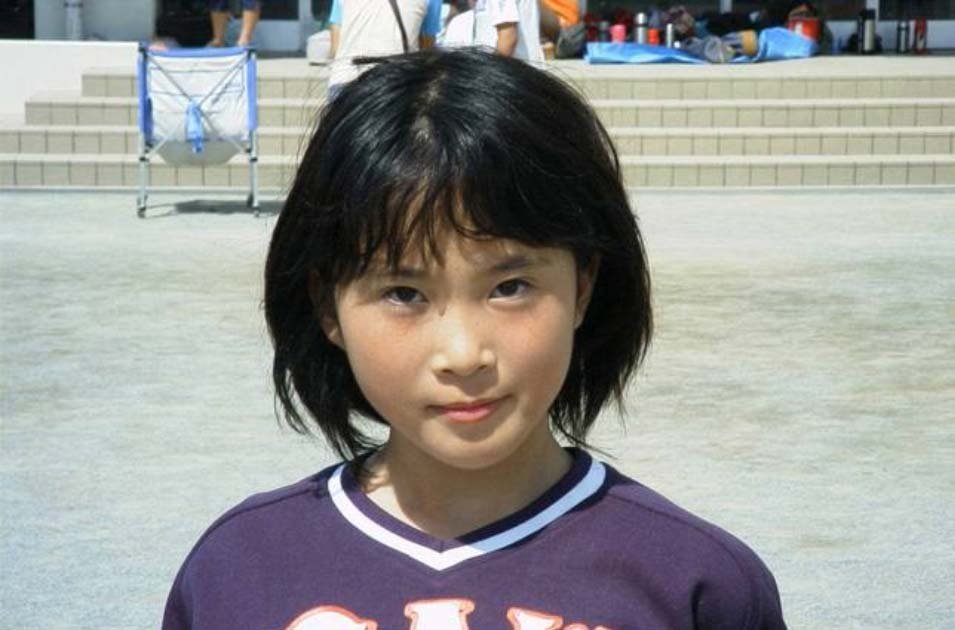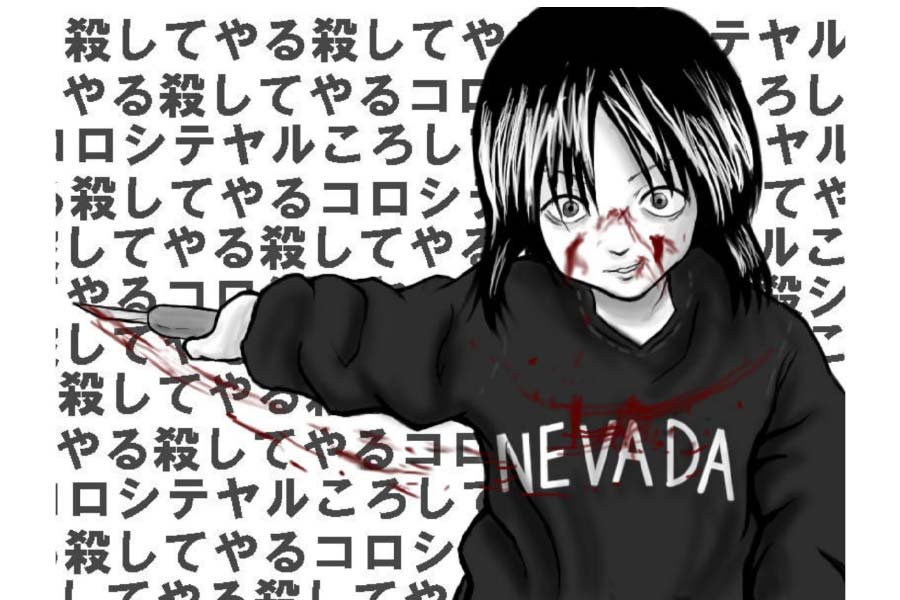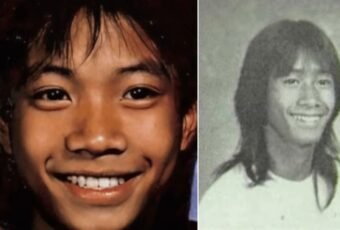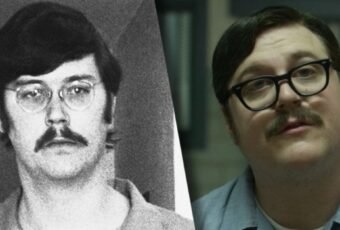In the quiet city of Sasebo, Nagasaki, a chilling event unfolded on June 1, 2004, that would shock the world and forever change the life of an 11-year-old girl, Natsumi Tsuji. This is the story of Nevada-Tan, a nickname that would become synonymous with one of Japan’s most infamous child murder cases and an unexpected internet phenomenon.
Nevada-Tan is a nickname given to Natsumi Tsuji, the nickname originated from a class photograph that showed a young girl believed to be Natsumi wearing a University of Nevada, Reno sweatshirt. The “-tan” is a childlike pronunciation of the Japanese honorific suffix “-chan”, which is generally used to refer to young girls.

The Girl Behind Nevada-Tan – Natsumi Tsuji
Who is Natsumi Tsuji? – Natsumi Tsuji, born on November 21, 1992, was an ordinary Japanese schoolgirl with an extraordinary intellect. With an IQ of 140, she was a high-achieving student, often seen immersed in her hobbies: reading, drawing manga, and writing poetry. However, her interests took a dark turn as she began to immerse herself in violent Japanese films, particularly “Battle Royale,” a movie depicting youth violence in a dystopian setting.
Her fascination with the macabre didn’t stop at films. Natsumi created a website dedicated to extreme violence, violent hentai, and gore, featuring mutilations, blood, and eschatology. Among the disturbing content was a short story called ‘The Red Room’, which she warned was “considerably scary” and not for the faint-hearted.
Natsumi Tsuji blindfolded Satomi before killing her
On June 1, 2004, Natsumi Tsuji took her classmate Satomi Mitarai to an empty classroom. She blindfolded her with the excuse that she wanted to play a game with her. With her old friend blindfolded, and without another word, Natsumi cut Satomi’s throat with her box cutter in cold blood.
But Natsumi didn’t stop there. The young girl inflicted multiple additional cuts on Satomi’s arms. Following the gruesome act, Natsumi, her clothes and hands smeared with blood, casually returned to her classroom as if nothing out of the ordinary had occurred. Her teacher, noticing her blood-soaked clothes and the box cutter in her possession, immediately raised an alarm. The horrifying reality soon came to light, leaving everyone in a state of shock.
Emergency medical services were summoned, but upon their arrival, they found Satomi’s lifeless body. In the meantime, the police had already taken the young perpetrator into custody, who simply confessed: “I did something wrong, right? I’m sorry.”
Nevada-Tan, an internet meme
Despite the horrific nature of her crime, the character of Nevada-Tan became a subject of fascination online. The internet, with its ability to spread information quickly and widely, played a significant role in this. Fan works and homages were created in her image, and she became a popular figure on Japanese imageboards Futaba Channel and 2channel and, later, on 4chan.

The small Nevada figure (in memes) started to get popular on Japanese forums like 2chan. Later, other anonymous forums would start talking about the subject, thus creating a great phenomenon involving several groups on the internet. The Nevada-Tan meme would eventually circulate around the world. The girl has been elevated to virtual celebrity status, becoming a ghoulish icon for equally sick teenagers across the internet.
Natsumi Tsuji was released after 9 years in prison
Natsumi was eventually taken to the police station, where she spent the night. In the first statements, she had hidden the reason why she had attacked Satomi, but after some time she ended up revealing that she murdered Satomi Mitarai because of comments the victim had made on the internet about her weight.
The young offender was put on trial on September 15, 2004, and sentenced to 9 years in a reformatory in Tochigi prefecture. Attempts to prosecute her as an adult were unsuccessful, leading to intense debates about age and criminal accountability. The Japanese government, maintaining a high level of discretion about crimes committed by minors, prohibited the media from revealing the girl’s name at the time. The news referred to her as “Girl A.” However, a journalist from Fuji TV, either intentionally or inadvertently, disclosed her real name: Natsumi.
Where is Natsumi Tsuji now?
Natsumi Tsuji was released from the juvenile hall in 2013, at the age of 20 after serving her sentence. Her current whereabouts are unknown, and her name has been legally changed to protect her identity. Despite this, the legacy of Nevada-Tan continues to live on in the darker corners of the internet, a chilling reminder of a tragic event that shocked a nation.
Children That Killed Other People
While the story of Nevada-Tan is shocking, it is not the only instance of a child committing a violent crime. Here are a few other cases where children under the age of 12 have been convicted of murder:
- Mary Bell (1968): At the age of 11, Mary Bell from England strangled two young boys to death. She was convicted of manslaughter due to diminished responsibility and was released from prison in 1980 at the age of 23.
- Jon Venables and Robert Thompson (1993): In one of the most notorious cases in UK history, 10-year-olds Jon Venables and Robert Thompson abducted and murdered two-year-old James Bulger. They were found guilty and became the youngest convicted murderers in modern English history.
- Jordan Brown (2009): In Pennsylvania, USA, 11-year-old Jordan Brown was charged as an adult for the murder of his father’s pregnant fiancée. He was later adjudicated delinquent (the juvenile court equivalent of a guilty verdict) in 2012.
- Lionel Tate (1999): Lionel Tate was 12 years old when he killed a 6-year-old girl in Florida, USA. He was initially sentenced to life in prison without parole, making him the youngest person in modern US history to receive such a sentence. His conviction was later overturned, and he was released on probation.
These cases, along with the story of Nevada-Tan, serve as stark reminders of the potential for violence, even among the very young. They highlight the importance of early intervention and support for children exhibiting signs of violent behaviour, as well as the ongoing debate about how young offenders should be treated by the justice system.
Read more from the website:










